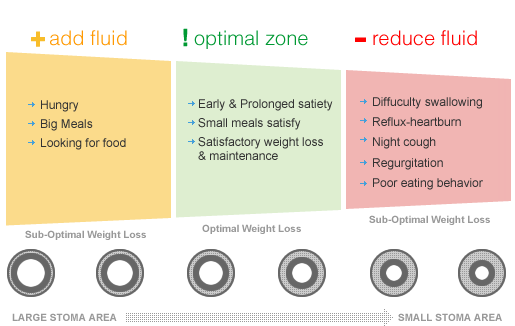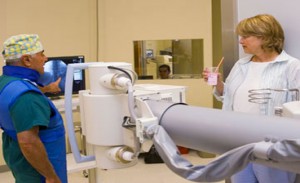Like Goldie Locks exploring the three bear’s house, do you find yourself wondering if your band is too loose, too tight, or just right? Do you feel sometimes like the perfect fill level can sometimes be a bit confusing? Well, you are not alone. When you consider all the different things that can influence how your band will feel, unraveling the mysteries can be a challenge.
 If your band is too loose you will be able to eat larger meals, be searching for food, and not have adequate weight loss. If the band is too tight you might not be able to tolerate solid food, like meat, and find yourself eating soft, mushy foods — like mashed potatoes, soups, or other high calorie items.
If your band is too loose you will be able to eat larger meals, be searching for food, and not have adequate weight loss. If the band is too tight you might not be able to tolerate solid food, like meat, and find yourself eating soft, mushy foods — like mashed potatoes, soups, or other high calorie items.
Working with your fill provider
Although doctors and fill providers make every effort to give their patients a perfect fill level every time, it is not always possible to predict how a patient will respond after receiving a fill adjustment. There are however, certain things that can be done to increase your chances of getting a good fill the first time and every time.
If you will not be having your fills done by Dr. Kuri, there are some things we recommend you consider. Some fill providers will encourage you to purchase a “fill package” or fills given on a regular schedule. We recommend you do not purchase fills that are made on a regular schedule (such as six fills in the first year). The reason is simple; you may not need six fills in one year. Making pre-scheduled appointments, can lead to over filling the band. Trust me you don’t want to go on the “fill, un- fill roller coaster”. With budgets getting tighter these days, these fill packages seem like a good deal, but you could end up spending more time, money, a loss of forward progress and worst of all complications from over-filling the band. First fills and all subsequent fills are not given on a routine basis. Instead, they are given according to your individual needs. In no case should a fill be given before 6 weeks post band surgery.
Adjustments to the band are made to allow the band to suppress appetite for a prolonged period of time. Adjustments are not meant to MAKE you stop eating. The band is a guide, it is not a collar.
We do not like “hard stops,” that is, where you eat until you “feel like you can’t possibly eat another bite” We do not use the word “restriction,” restriction would be a “feeling,” and we do not subscribe that you should feel pain or pressure to stop eating. The band does not work by “feeling restricted,” and those who seek that term have difficulty maintaining a good fill level and typically do not lose the weight they should .
Make sure you are ready for a fill
Fill providers vary in their experience and service they provide. Good communication between you and your fill provider can make the difference between a good fill and a not so good fill. Fills can be done quickly, usually fifteen minutes is all it takes to receive a fill. This does not leave allot of time for a long conversation with your fill provider. Your fill provider is going to assume you have considered all the variables in determining that an additional fill is needed. Unfortunately most fill providers don’t have the time to question you to find out if you have considered all the variables that would determine if a new fill is needed, such as current food selection, lifestyle and amount of weight loss since your last fill.
 Self Assessment
Self Assessment
One of the benefits of the Lap Band is to be able to adjust the amount of fill (saline added to the band) needed as weight loss continues. However, with a strong desire to lose weight it is easy to misuse this valuable advantage. Patients often have the “more is better” mentality. Lack of continued weight loss is not the only determining factor for receiving an additional fill. Before you make your next fill appointment, you need to do a self assessment of the lifestyle and diet changes needed to help the lap Band do its job in encouraging weight loss.
Ask yourself these questions:
- Am I focusing on eating a healthy balanced diet? Or do I frequently eat sweets, higher fat foods and liquid calories?
- Am I using good portion control, limiting my portion size to no more than ½ to 1 ½ cups of food at a meal? Or do I frequently rely on the band to stop me from over eating, but seem to eat a larger meal when I want to?
- Am I consistent about eating fiber rich foods such as vegetables and fruit? Or do I get less than five servings a day?
- Do I spread my calories throughout the day? Or do I skip breakfast and tend to eat more in the latter half of the day?
- Do I plan out my meals and snacks ahead of time to make sure I am getting a balanced diet? Or do I eat what is convenient and fast, with very little planning?
- Am I getting the recommended 30 to 60 minutes of exercise and physical activity on most days? Or has my exercise routine been more of a hit or miss routine?
- Am I consistent about following the 10 Lap Band rules? Or do I only follow the ones that I want to?
More fill will not help your weight loss if these Lifestyle and diet issues are not addressed.
These questions and more would be what every fill provider would ask you if they had the time to ask you. This is why it is important for you to take the responsibility assessing your habits before you determine if another fill is needed.
You know you need a fill when a small amount of food is not lasting you an appropriate period of time. When you find yourself looking for food — and feel as if you are dieting.
It is a common mistake to think that a really tight fill will improve your chances at weight loss. That is simply not the case. There is no advantage gained by having a too tight fill, and in many cases can cause many problems and disappointment in your results.
If you are having any trouble with your current fill such as regular pain or excessive pressure when eating, frequent vomiting episodes when eating or right after eating, reflux problems, not able to drink fluids or fluids that seem to take too long to pass through the stoma, unable to eat solid food or more than a couple small well chewed bites at a meal, then you are not a good candidate for a fill at this time. Rather you should consider needing a un-fill to improve any of these problems.
There are several reasons to have pain after eating:
(A) Eating too much.
When you stretch the pouch you may experience pain. This is your body warning you that you have eaten too much, especially if you have pain in the left shoulder. This means the pouch is stretched. Remember, the volumes we express are not the minimum to eat but the maximum. Successful patients eat a portion and walk away. Do not eat until you “feel full.” Your band will slip if you chronically overeat your pouch.
(B) Eating too fast.
When you eat too fast you can cause pain in the pouch. This also leads to eating too much. Successful patients eat slowly over 15 to 20 minutes. Unsuccessful patients tell us that they don’t have time to eat — and yet manage to get more calories in than they need. Eat slowly. Slips happen when patients eat too fast.
(C) Eating too large a bite.
Slow down. Take your time. Put nothing in your mouth larger than the fingernail of your smallest finger. If you eat too large a bite things can become stuck. If you eat too large a bite it can become lodged into the pouch and cause discomfort and lead to a slip.
See How to Chew Food Properly
When food becomes stuck
It will feel like a golf ball underneath your breast bone. You may be in pain. You may not be. You may “slime” and produce a lot of saliva in your body’s attempt to dislodge this.
Things that become stuck:
Chicken is the worst offender, especially chicken that has been microwaved. Re-heating chicken tends to make it so that it will be too tough. Chicken with other things that get stuck are also a culprit — chicken and rice, chicken and noodles, or chicken and tortillas or other bread type of products. Breads, pasta, rice — all can become stuck. Vegetables that are fibrous — humans do not digest the methyl cellulose in vegetables. So, cut the vegetables so that the fibrous material does not sit in your pouch obstructing things periodically.
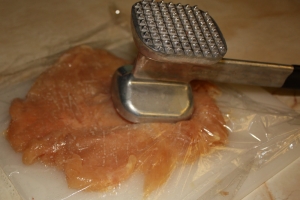 To make chicken so it won’t get stuck:
To make chicken so it won’t get stuck:
Use a meat hammer and pound it.
DO not overcook it so it is dry.
Marinate the chicken.
Slow roast.
Best way to not get things stuck:
Avoid the problem. Chew well. Eat slowly. Do not overeat.
Avoid dry chicken or re-heated chicken .
If something gets stuck: Stop eating. If it burps or vomits up — good. IF it is stuck for more than 20 minutes then do not eat for 24 hours. Instead go on liquids. Once something is stuck for a while it will cause the stomach lining to thicken, so you will be prone to have things stuck.
To help get things unstuck — stand up, walk, jump. It will pass. If it does not — you may need to take fluid out of the band.
How to prepare for a fill adjustment
Keeping yourself well hydrated is always important, but even more so, when you are going to receive a fill. Keeping hydrated will help prevent your stoma from swelling and improve the accuracy of your fill. Start several days before your appointment, making sure you are taking in 64 to 80 ounces of fluids daily. If you engage in strenuous work or exercise, make sure you replace fluids with extra water. Avoid foods with excessive amounts of sodium, as these foods can have a dehydrating effect on the body. Stick with no-calorie, non-carbonated beverages or just plain water.
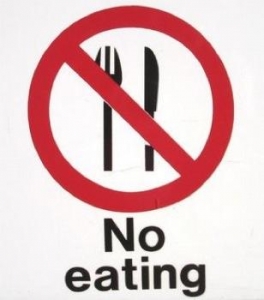 Eating before a fill
Eating before a fill
To receive a good fill requires that your pouch is empty. For this reason you should not eat solid or soft foods 2-4 hours before your fill. Full liquids are fine in small amounts, but discontinue 2 hours before your fill appointment.
Avoid eating a heavy, spicy or a late meal the night before. Avoid eating anything that may cause you to have a PB episode. You want your stomach to be as peaceful as possible.
Relax
Relax and get a good night’s rest, there is nothing to worry about. Receiving a fill is very routine. It is similar to getting your blood drawn. We want you to be calm and relaxed for your fill. Stress can cause a false tightening of your stoma, and can make it harder to get a good fill.
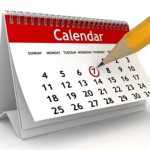 Ladies check your calendar
Ladies check your calendar
Bands are tighter anytime you have swelling — when you are ill,or if you have allergies. Avoid scheduling a fill during your menstrual period or several days before, as you may be retaining water at that time. This may reduce your chance for a good fill. It is unwise to receive a fill during these times.
Recovering from a Fill adjustment
The first 24-48 hours following a fill should be considered a period of recovery. The stomach as a rule can be a very grumpy organ, any small change and the stomach will react with swelling. Your results from your fill may not be apparent for a couple of weeks. It can take 1-2 weeks for your stomach to return to a more settled condition. It is important not to force food through the smaller opening. Any irritation will delay your recovery. You may also end up needing a un-fill if you continue to irritate your stomach. It is important to remember that your latest fill adjustment changed the size of the opening through the stoma. Many of the foods you were able to eat easily may now give you some trouble. A slow approach is recommended and taking small bites and chewing your food thoroughly becomes more important than ever. This is a good time to refer back to the post-op diet you were given when you first had your surgery. Pay close attention to the sections on full liquids, soft foods and introduction to solid foods. You may also want to take this time to remind yourself of the 10 Lap-Band rules.
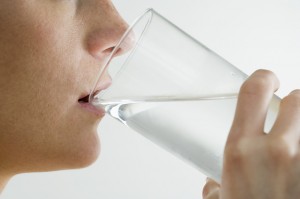 Keep yourself hydrated
Keep yourself hydrated
Keeping yourself properly hydrated after your fill is important to the recovery phase. It is also a good indicator of how your new fill feels. After your fill you should be able to drink room temperature water with no problem. If you can’t get water down you may need a un-fill. It is recommended that you stay in the lobby for awhile after your fill to make sure you can tolerate your new fill level. You don’t want to be traveling home before you realize you are too tight and need to return.
Traveling Home
If you have traveled some distance to receive your fill, you may consider staying the night and leave the next day. This will give you a chance to test your new fill level with some full liquids and possibly a bite or two of soft foods, before you get on a plane or start a long drive back home. This will save you the inconvenience of having to return for a un-fill.
24 – 48 hr. recovery diet
Just like after your surgery you are going to ease back to solid food again. Except this time you will complete it in 2 days. Stay on full liquids for the first 24 hours if you can. Full liquids are liquids that can easily go through a straw. If you did fine with full liquids you can move on to soft foods. Soft foods are foods you could eat if you had no teeth. Use good judgment; if you have had no trouble at this point you can slowly introduce soft cooked solid foods again.
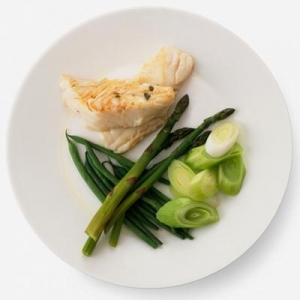 Testing your new fill level
Testing your new fill level
If you have completed your 48 hour recovery diet, and have had no problems, you should start to test your new fill level by eating a typical Bandster type meal. A typical Bandster meal will consist of 2-4 ounces of soft-cooked solid protein followed by a 1/2 cup of vegetables. This meal should be able to keep you satisfied for 3-5 hours. If you cannot eat moist solid protein, and can only eat soft foods or liquids then you may be too tight. If this is the case, don’t make the mistake of eating “easy foods” to get by. You will find that “easy foods” can easily be over eaten defeating the purpose of the band. Patients that go this route will train themselves to eat around the band and actually gain weight, leading to disappointing results.
The slow approach is better
Your approach to receiving your fills should be slow and gradual. Although patients vary as to how many fills they may require. The key is to gradually introduce some pressure and restriction to give the patient time to adjust their eating habits and promote a perfect fill level for sustained weight loss. If this is your first fill experience, or one of many you may have had, good preparation before and a little maintenance after your fill will greatly improve your chances for a successful fill.

